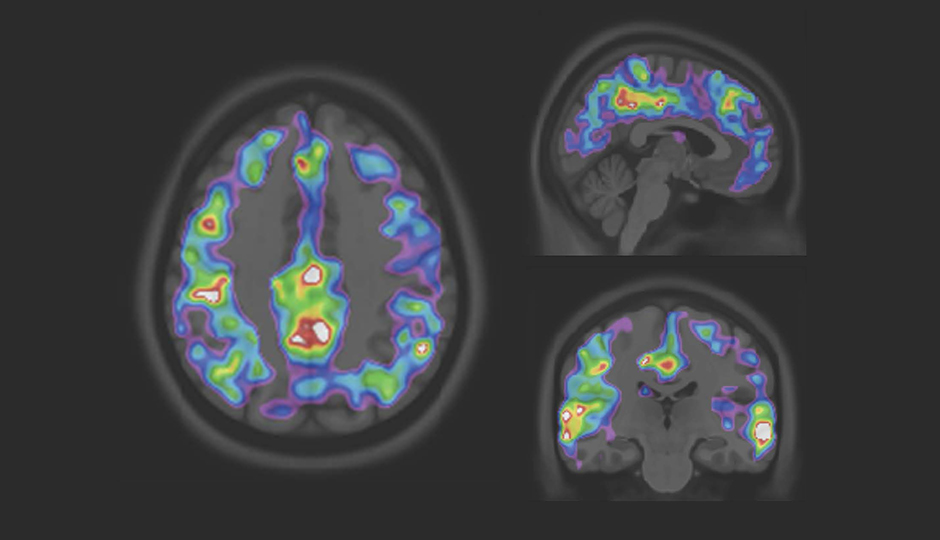You may think you’re suffering from Alzheimer disease but is it really Alzheimer’s? It can be challenging to diagnose the disease, which destroys brain cells, because it is clinically difficult to differentiate it from other types of dementia. Until now, only an autopsy could provide confirmation. But not anymore. Marc-André Bédard, professor in the psychology department at Université du Québec à Montréal, and his team at the Montréal Neurological Institute and Hospital have developed a new marker that reveals the lesions of the cholinergic cells—a type of neuron that is affected by Alzheimer’s. Bédard was even the first to test it: he injected himself with the compound, which combines a radioactive isotope and a molecule known as fluoroethoxybenzovesamicol (FEOBV) that binds onto the cholinergic neurons, and underwent a PET scan. The scanner generated images of his grey matter, and the radioactive compound caused the brain to light up in a colour gradient. The cells affected by the disease can then be identified based on the intensity of their colours.
The degree to which the cholinergic neurons are impacted is a better indicator than the amyloid plaques.
By using the biomarker, Marc-André Bédard and his collaborators noted that the degree to which the cholinergic neurons are impacted is a better indicator than the amyloid plaques that have often been linked to the earliest cognitive losses brought about by Alzheimer disease. The researchers also confirmed the post-mortem observations that the more cholinergic cells are lost, the more significant the symptoms of dementia.
After dedicating 15 years to the development and validation this new tool, Marc-André Bédard’s team has done the impossible: it has created a reliable means to identify and quantify Alzheimer disease by using cholinergic cell death as an indicator. In addition to following the evolution of the disease, the biomarker makes it possible to validate whether treatments are able to stop cell death.




